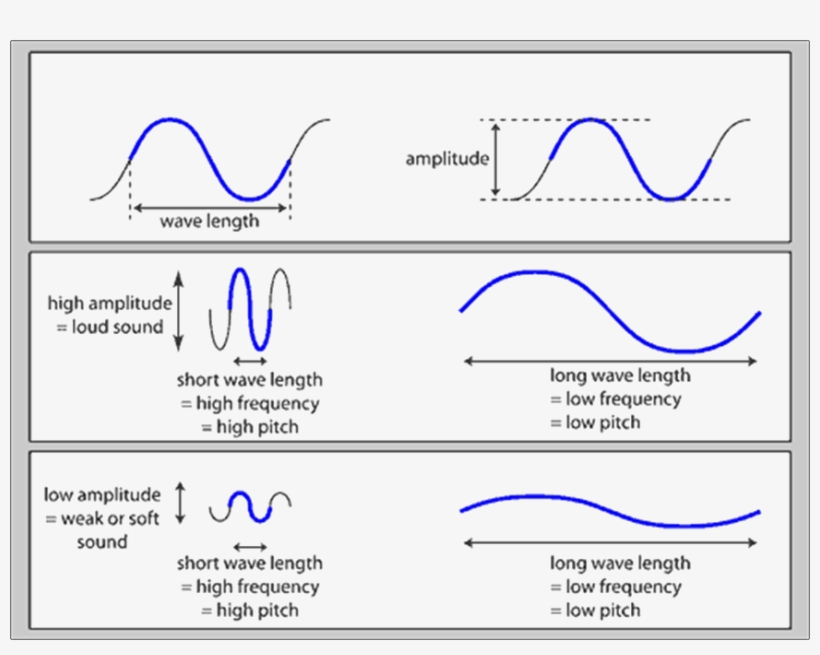Noise is a concept that everyone is familiar with. It is becoming more prevalent in our daily lives, and even more annoying too. From the bustling streets of Mumbai or New York, to the deep rumbling of airplanes above your home, or to the sound of the baby crying next door. You cannot escape or control noise, which makes it just THAT much more frustrating. But before we dive into why noise is annoying, I’ll first walk you through what noise actually is.
What is noise?
Just like light and electricity, noise is a form of energy. When an object vibrates, it also vibrates the air molecules in the air, and this vibrational energy lands on our eardrums that we hear as a ‘sound’. For example, when you decide to close a car door, the vibrations of the car door molecules vibrate and push air molecules in the air, allowing us to hear the sound of the car door closing. These vibrations travel in air in a series of waves that we call sound waves. There are two important characteristics of sound – loudness and frequency. When you slam the door hard, the vibrations are larger and the sound is louder (or, the greater the amplitude of the sound wave). On the other hand, the faster the object vibrates, the higher the frequency of the sound wave, and the higher the pitch of the sound. Compare the sound of a whistle to a drum for example. The high-pitched whistle has a smaller wavelength and thus a higher frequency than the drum.
But, what is noise? It’s very simple: Noise is the unwanted form of sound.

If all noise is sound, why are they so different?
Now, this is where things aren’t so simple anymore. Noise is the sound that we do not want to hear. But when does sound become noise? Well, it all depends on you and your brain. Imagine you are watching TV. For you in that moment, the TV is producing sound that your brain is focusing on in order to follow and understand the show. Now imagine that someone comes into the room and starts talking to you. More likely than not, your attention will switch to the person who is speaking. The chatter on the TV is no longer audible or understandable for you, and just like that, it has become noise! This phenomenon is actually called the cocktail party effect, and it explains how our brain is able to sub-consciously decide what sounds we want to hear- and which we don’t. Wondered why you cannot hear your own blood pulse through your body? That’s because your brain recognises and actively tunes out such sounds.
What makes noise annoying and unpleasant?
Noise can be annoying and unpleasant for two reasons:
- If noise is too loud, then it can become uncomfortable or even painful and dangerous. The loudness of sound is measured in decibels (dB). In general, below 85dB, the sound is considered to be safe. At around 110dB, it becomes extremely loud, and around 140dB, it reaches the threshold of pain. If you’re wondering why danger rises more quickly than the number of decibels, it’s because decibels is not a linearly increasing scale. As a rule of thumb, an increase in 10dB is perceived as doubling the loudness.
- Noise can be unpleasant because of how you perceive the sound. Have you ever had a door that would squeak every time you open it? Well, this sound is not necessarily loud, but nevertheless still extremely annoying! This is because the physical properties of noise do not fully determine the way people are affected by it. Instead, psychological factors come into play. At DeNoize, we like to refer to this phenomenon as noise perception.
What is noise perception, and why is it important?
To a mother of children, hearing her children screaming while they play outside could invoke a sense of comfort and happiness, knowing that her children are safe and happy. But for their neighbour who is trying to work, the relentless screaming children could be driving them insane. Although the amount of noise reaching the ears of both people could be exactly the same in terms of loudness and frequency, their experiences are altered by how their brain perceives this noise.
To look at it from a different perspective, I want you to think of your favourite song. Why is it your favourite? Why does it have such a strong effect on our mood? This also has to do with the way you perceive the sounds, and how your brain associates a piece of music with a particular feeling, place or time. Perhaps listening to “Summer of ‘69” by Brian Adams makes you feel nostalgic, or excited. This once again is a prime example of how there is more to sound than just loudness and frequency.
Is a completely silent world the answer?
Absolutely not – sound is vital to our lives. It is necessary for communication, signaling danger, leisure, among many other things!
At Microsoft’s headquarters in Redmond, Washington, they have built one of the world’s quietest rooms, otherwise known as an “anechoic chamber”. This is because this room is fully insulated to create no echo at all. According to some people who have sat inside this chamber for an extended period of time, they start to hear their own heartbeat as well as their bones grinding when they move. If they are there even longer, they start to lose spatial awareness and start to feel claustrophobic. This is because the lack of reverberation in the room (which is what happens when sound waves bounce off of surfaces) makes the room seem smaller.
This just goes to prove that we really need sound in our lives. Without it, we would quite literally go insane!

How should we be measuring noise in the future?
At the moment, it is a common industry practice to measure the amount of noise produced by various sources by measuring or modelling how many decibels of noise it creates. It is important to note that dB only measures how loud something is, and does not consider how the noise is perceived. At DeNoize, we are currently investigating new ways in which we can improve the acoustic environment of people’s indoor environment. We don’t only want to reduce the amount of noise entering people’s homes, but also see how we can optimise the acoustic environment for each individual depending on their perception of different sounds. Thus, we are committed to developing a new practice for measuring noise: it should no longer be an objective and empirical measurement (like the dB system), but instead it should integrate the subjective and qualitative aspects of noise perception into the measurement.
We should focus less on the noise source and more on the humans experiencing it.

DeNoize will become commercially available in 2022. Be the first to secure your spot on our shortlist for your very own DeNoize windows. No obligations. No hidden terms and conditions. Just €1.
How?
Go to our website and calculate an online price estimate. Choose your preferred payment plan and then reserve your spot by paying €1. Spots are filling up fast!
READ MORE

